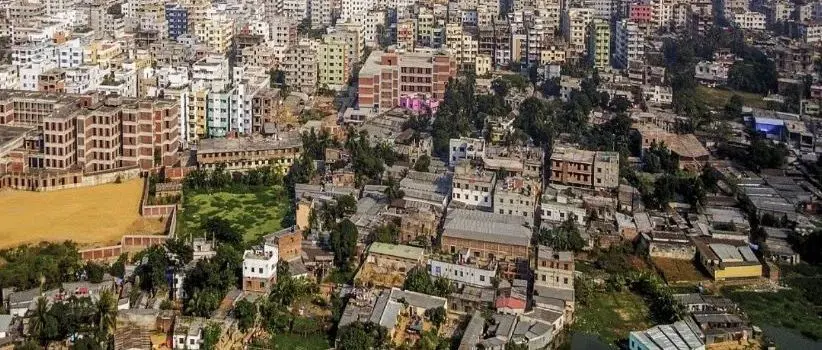"Different from the rest" Bangladesh
Bangladesh is arguably one of the most overlooked countries in the world. Despite its population of over 160 million, which is greater than the combined populations of Germany and France, it receives little international attention.
Recently, Prime Minister Hasina, who had been in power in Bangladesh for over a decade, was forced to step down due to student protests. Nobel Peace Prize laureate Muhammad Yunus took the lead in forming an interim government. As Bangladesh stands at a critical juncture in its national destiny, it is worth discussing the unique aspects of this country.
Bangladesh has established itself as a labor-intensive manufacturing powerhouse, achieving remarkable economic success. Despite the presence of populous nations like India and Pakistan in South Asia, they have not fully leveraged their labor force advantages to develop competitive labor-intensive manufacturing sectors. However, Bangladesh is different. By deeply tapping into its vast labor reserves, it has built a robust textile and apparel industry. Not only has it carved out a niche in South Asia, but it also stands as a global powerhouse in garment exports, on par with China and Vietnam.
It is precisely by relying on the textile and garment industry that Bangladesh's economy has developed rapidly in recent years, overtaking Pakistan and India from being one of the world's least developed countries to becoming a leading nation in South Asia, and also emerging as a significant new industrial economy globally. Therefore, Bangladesh is also the South Asian country whose development trajectory is most similar to the East Asian "take-off economies."
Meng fully promotes the development of labor-intensive industries, essentially leveraging its comparative advantages in resource endowments, and the results are actually better than those countries that are keen on "seeking far and wide"—for example, India is obsessed with developing "high-end" industries such as finance, pharmaceuticals, and services, wasting its vast labor reserve resources.
Bangladesh, with a rich revolutionary tradition, has managed to avoid religious and ethnic conflicts. Unlike its neighboring countries, Bangladesh is the only nation in South Asia that achieved independence through violent revolution, with its people paying a high price for the birth of the nation. This unique path to statehood has endowed Bangladesh with a strong tradition of social movements, where student organizations and social groups are highly active and combative. Even during the strong rule of Sheikh Hasina, high-intensity protests led by opposition students and organizations never ceased, resulting in casualties every year. Consequently, after overthrowing Hasina, the notion of a "second independence" emerged in Bangladesh, filled with joy over the expulsion of Hasina, who was seen as an "Indian puppet." Notably, despite the continuous social struggles, Bangladesh rarely experiences the religious and ethnic conflicts that plague other South Asian countries, focusing more on social and political battles.
In fact, under Hasina's leadership, Bangladesh's economy has achieved unprecedented development. This year's social movement has ousted Hasina, and as a result, the country's textile and garment foreign trade, which is the cornerstone of its economy, has been severely impacted by political turmoil, significantly affecting its foreign exchange earnings and endangering its balance of payments. Additionally, while the infrastructure construction financed through heavy borrowing has put pressure on Bangladesh's economy in the short term, it is an inevitable path for the long-term transformation and upgrading of its industries, yet this is listed as one of Hasina's "crimes." Without sustained and intensive investment, Bangladesh's development miracle would be difficult to sustain and might instead fall into the trap of "correct but useless" policies.
Bangladesh faces extremely stringent resource constraints and a fiercely competitive struggle for survival. With a population of over 160 million, the country's land area is only equivalent to that of Anhui Province in China, making it one of the most densely populated nations in the world, second only to city-state island nations like Singapore in terms of population density. To make matters worse, Bangladesh is also severely lacking in natural resources. It relies on imports for fossil fuels, mineral resources, and food to varying degrees. Additionally, due to its alluvial plain topography, the country lacks hard rock. This means that Bangladesh cannot even find gravel for use as concrete aggregate and must first find clay to make bricks, which are then crushed to produce a substitute known as "brick chips."
The reality of limited land and resources in Bangladesh necessitates the appreciation of the hard-won and effective development model, better aligning with its own advantageous resources, and breaking free from resource constraints through outward-oriented development to truly achieve a leap in the country's comprehensive national strength. If Bangladesh, after eliminating maladministration in the future, continues to fully leverage its comparative advantages and steadily follows the path of manufacturing-led development, it has the potential to become a leading nation in the industrialization of South Asia.

END
Follow Global Magazine Video Number

Source: Global Magazine, Issue Editor: Hu Yanfen
监 制:李晓明
责任编辑:乐艳娜编 辑:林睎瑶

